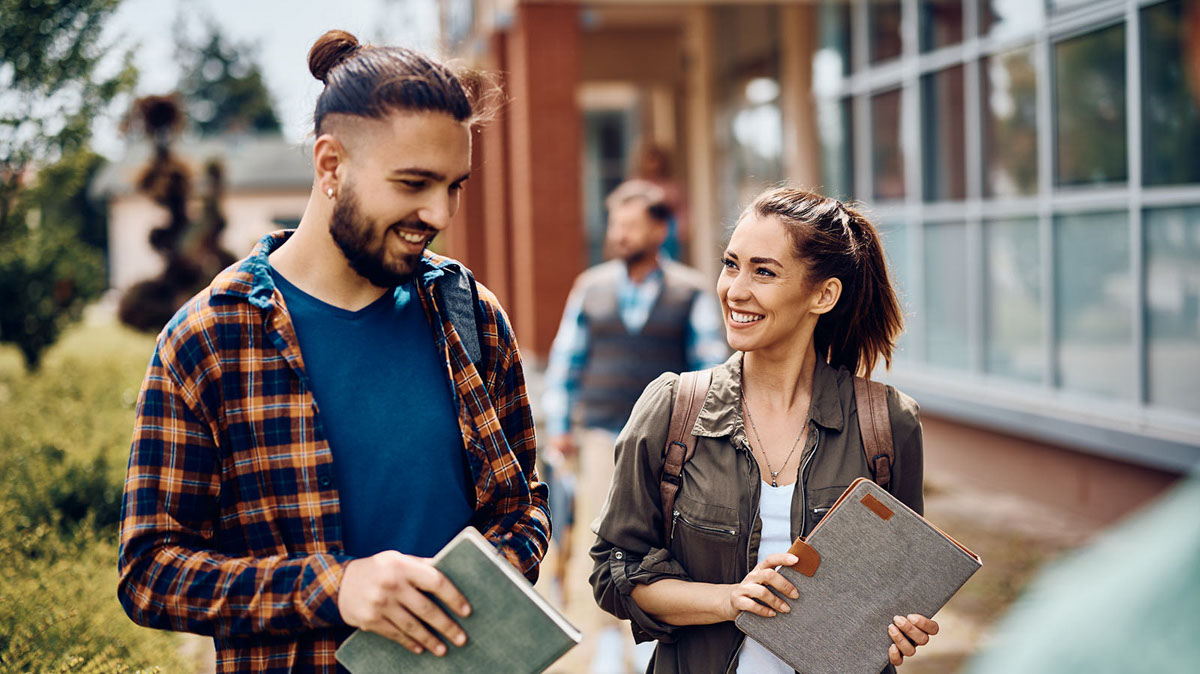Modes of study
Modes of study
Unlike secondary education, studying at a university can take many different forms. You might have classes that meet both on campus and online, and you will likely engage with a variety of online resources.
The digital campus
The digital campus is a concept to help students and staff understand that not all learning takes place at the physical location where a tertiary institution operates. The tertiary community will have to work across the internet, online resources, digital learning environments and social platforms. The instituion where you're enrolled will aim to use these locations as well as the phsycial ones to best deliver a quality educational experience so you can develop the skills and knowledge to prepare you for work and life.

Blended learning
Many universities have transitioned to blended learning since the beginning of the Covid 19 pandemic. The blended learning experience is a mix of online and face to face activities. Blended learning is flexible, accessible, inclusive and connected, supported by specialist spaces, services and technologies. The university isn’t just a physical place, and much of your learning and connections will be undertaken online.
Digital learning is a core part of every student’s experience. This may be in the form of readings, videos or other kinds of learning materials that you can access through digital learning platforms as you learn at your own pace. Blended learning programmes may include a rich mixture of face-to-face and/or online learning activities incorporating different media such as text, audio or visual media. This provides opportunities to explore different learning methods and activities.
A typical example of a blended learning timetable usually means that your lecturers will create in-person classes in the physical classroom and combine them with online classes. A typical blended learning schedule would be something like:
Monday: In person class
Tuesday: In-person class
Wednesday: Online class and activities
Thursday: In-person class
Friday: Live Online class and activities
The flipped classroom
In a flipped classroom, students engage with the materials before or outside of the class. It's flipped because you have done the homework before rather than after the class. This gives you the opportunity to discuss the learning material you have explored, contextualise what you have learnt, and clarify any concepts with your teacher. This allows you to develop deeper knowledge through discussion and activities (Allan, 2016).

Concurrent teaching
Concurrent teaching is when a class is both face-to-face and online at the same time. Students who need to attend university remotely can tune into a lecture or tutorial via live video stream on their own device.
Supplementary / other ways to learn / extracurriculuar opportunities
As well as the material and assessment offered by your teachers, there’s plenty of other ways to get the most out of your time while you study. You may be eligible to undertake short courses, or other types of training that have no additional cost. These might help you develop skills which are valuable to employers in a workplace and give you an advantage over other graduates.
References
Allan, B. (2016). Emerging Strategies for Supporting Student Learning : A practical guide for librarians and educators, Facet Publishing. https://www.facetpublishing.co.uk/page/detail/emerging-strategies-for-supporting-student-learning/?k=9781783300709
Images by Drazen and D Lahoud/peopleimages.com
